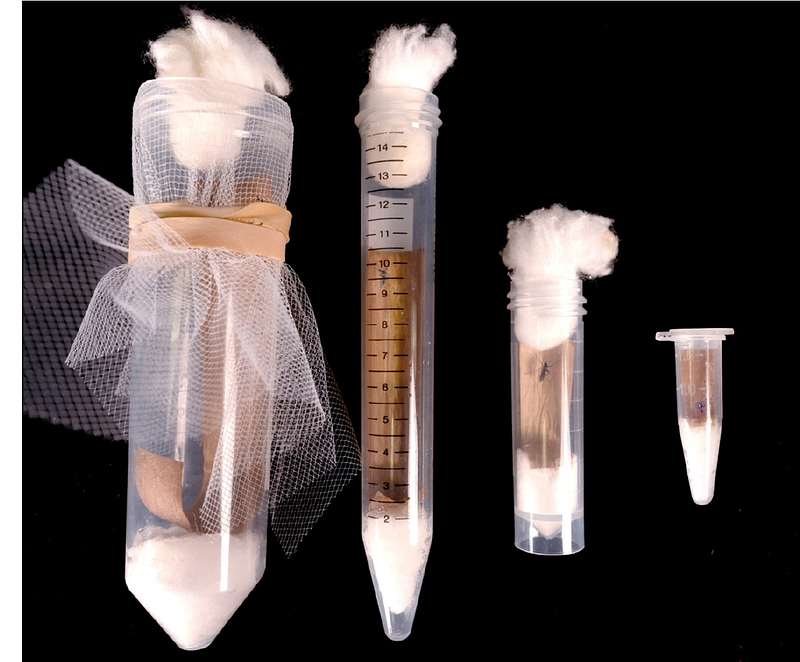Claustrophilic oviposition: oviposition performance depends on container size in a novel forced oviposition method for Culex quinquefasciatus and Aedes aegypti

Claustrophilic oviposition: oviposition performance depends on container size in a novel forced oviposition method for Culex quinquefasciatus and Aedes aegypti
Dagg, K. A.; Estep, A. S.; Bartz, C. E.; Burgess, E.
AbstractMosquito vector control research relies heavily on the use of live organisms, with wild populations playing a critical role in surveillance, field product validation, and strengthening the overall efficacy and accuracy of studies. However, too often wild mosquito rearing and colony establishment in laboratory settings is consistently challenging. Here we present a modified version of a forced oviposition method for use against two different mosquito species, Aedes aegypti and Culex quinquefasciatus. The efficacy of the technique was tested with both laboratory and wild-caught strains placed in oviposition tubes consisting of a 1.5 mL tube containing moistened cotton and a strip of germination paper. To determine if size had an impact on oviposition rate, an additional test was conducted using four different size oviposition tubes; 1.5, 5, 15, and 50 mL. Overall, the forced oviposition method was highly effective, successfully generating eggs from lab reared and field collected strains. The method was more effective with Ae. aegypti (>80% females oviposited) compared to Cx. quinquefasciatus (50-60%) in both strains. Culex quinquefasciatus holding time was longer (3-7 days) compared to Ae. aegypti females, which oviposited within 24 hr of being transferred into tubes. Intact versus broken egg rafts affected egg hatch rate in laboratory Cx. quinquefasciatus strains but had less impact on the wild strain. Additionally, both Ae. aegypti and Cx. quinquefasciatus displayed a claustrophilic oviposition behavior with a higher percentage of females ovipositing in the 1.5 and 5 mL tubes. This study demonstrates that the forced oviposition method can be easily adapted to other mosquito vector species and effective in producing F1 progeny needed for critical vector research.